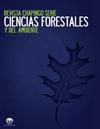土曲霉对有毒金属耐受性的评价
IF 0.6
4区 农林科学
Q3 Agricultural and Biological Sciences
Revista Chapingo Serie Ciencias Forestales Y Del Ambiente
Pub Date : 2021-08-31
DOI:10.5154/r.rchscfa.2020.07.047
引用次数: 0
摘要
引言:金属污染是主要的环境问题之一。一些金属在极低浓度下具有毒性,具有生物累积性,不会分解为无毒形式。目的:在受有毒金属污染的场所分离一株微小真菌,并评估其对这些物质的耐受性。材料与方法:从一废弃铅矿山的土壤中分离真菌。在50、100、250、350和500ppm的浓度下,分别评估真菌对镉、汞和铅的耐受指数;此外,在4、8、16、64、80、120、200和400ppm下评估了具有镉、铬、汞和铅的多金属体系(混合物)。还测定了最小抑制浓度(MIC)。结果与讨论:分离的真菌被鉴定为土曲霉,在所有测试浓度下对铅的耐受指数均为0.9,在大多数汞浓度下的耐受指数为0.8。镉是毒性最大的金属;在50ppm和100ppm下分别观察到0.56和0.2的耐受指数。在高达64ppm的多金属体系中观察到高耐受指数(0.9)。铅和汞的MIC大于500ppm,镉的MIC小于250ppm,多金属体系的MIC高于400ppm。结论:土鳖对铅在各种浓度下均表现出较高的耐受性。公差水平受金属类型的影响。本文章由计算机程序翻译,如有差异,请以英文原文为准。
Evaluating Aspergillus terreus tolerance to toxic metals
Introduction: Metal pollution is one of the major environmental problems. Some metals are toxic at very low concentrations, bioaccumulate and do not decompose to non-toxic forms. Objective: To isolate a strain of microscopic fungus in a site contaminated with toxic metals and to evaluate the tolerance to these substances. Materials and methods: Fungi were isolated from the soil of an abandoned lead mine. Tolerance index of fungi to cadmium, mercury and lead was evaluated individually at concentrations of 50, 100, 250, 350 and 500 ppm; in addition, a multimetal system (mixture) with cadmium, chromium, mercury and lead was evaluated at 4, 8, 16, 64, 80, 120, 200 and 400 ppm. The minimum inhibitory concentration (MIC) was also determined. Results and discussion: The isolated fungi were identified as Aspergillus terreus, which showed high tolerance indices for lead (0.9) at all concentrations tested and indices of 0.8 at most mercury concentrations. Cadmium was the most toxic metal; tolerance indices of 0.56 and 0.2 were observed at 50 ppm and 100 ppm, respectively. High tolerance indices (0.9) were observed in the multimetal system up to 64 ppm. MIC was greater than 500 ppm with lead and mercury, less than 250 ppm with cadmium and greater than 400 ppm with the multimetal system. Conclusion: A. terreus showed high tolerance to lead at all concentrations tested. The level of tolerance is influenced by the type of metal.
求助全文
通过发布文献求助,成功后即可免费获取论文全文。
去求助
来源期刊
CiteScore
1.20
自引率
16.70%
发文量
0
审稿时长
>12 weeks
期刊介绍:
The Revista Chapingo Serie Ciencias Forestales y del Ambiente (RCHSCFA) is a scientific journal that aims to raise awareness of high-quality research products related to forest, arid, temperate and tropical environments in the world. Since its foundation in 1994, the RCHSCFA has served as a space for scientific dissemination and discussion at a national and international level among academics, researchers, undergraduate and graduate students, forest managers and public/private entities that are interested in the forest environment.
All content published in the journal first goes through a strict triple-blind review process and is published in the following formats: Scientific Articles, Review Articles, Methodologies, Technical or Technological Notes.

 求助内容:
求助内容: 应助结果提醒方式:
应助结果提醒方式:


